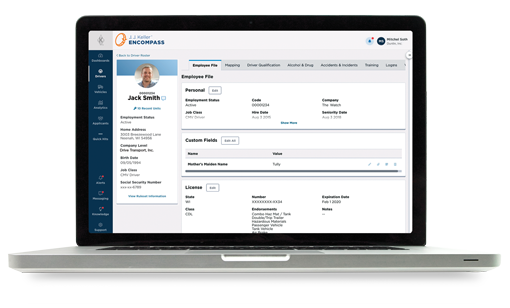Industry Business Advisor — J. J. Keller & Associates, Inc.
How to Avoid Risk During a Merger or Acquisition in Trucking
Mergers and acquisitions come with distinct compliance challenges. Here are the basics of handling FMCSA compliance during the M&A process.
Published On: 03/19/2025


Written by:
Josh Lovan
Mergers and acquisitions (M&A) in the trucking industry bring with them a distinct set of compliance challenges, particularly when it comes to adhering to the Federal Motor Carrier Safety Administration (FMCSA) regulations. As businesses consolidate or acquire other motor carriers, they must carefully navigate various regulatory requirements to ensure they remain compliant with FMCSA standards.
MCS-150 Form
A key starting point in the M&A process is updating the FMCSA’s MCS-150 form. This form contains critical information about a company's operations, such as fleet size, geographic scope, and safety performance. Following a merger or acquisition, the MCS-150 needs to be updated to accurately reflect the new fleet, operational changes, and organizational structure. Failing to revise this form can lead to non-compliance, negatively impacting a company’s safety rating and legal standing.
Driver Qualification Files
Driver qualification (DQ) files are another crucial area of compliance. FMCSA regulations mandate that motor carriers maintain detailed DQ files for each driver, including records of their qualifications, training, medical exams, and any violations or accidents. During an acquisition, reviewing and verifying the DQ files of all drivers is essential to ensure they meet FMCSA standards. Missing or incomplete records could lead to penalties or legal repercussions.
Vehicle Maintenance Records
Additionally, vehicle maintenance records are integral to FMCSA compliance. Mergers and acquisitions often involve integrating new vehicles into an existing fleet, and it’s important to ensure that the maintenance records for these vehicles are up-to-date and comprehensive. FMCSA regulations require regular inspection, repair, and maintenance to ensure vehicle safety. Any lapses in maintenance records, especially for newly acquired vehicles, could result in potential legal issues.
Compliance Best Practices
As part of the M&A process, conducting mock audits can be an effective strategy to identify potential non-conformance and address them proactively. These internal audits can reveal gaps in regulatory compliance across all areas, from driver qualifications to vehicle maintenance and safety procedures. Mock audits offer an opportunity to correct discrepancies before they lead to penalties.
Ensuring that tractor DOT markings comply with FMCSA guidelines is a necessary step when integrating new equipment into a fleet. All acquired vehicles should be properly marked with the new carrier’s legal trade name and USDOT number. Inconsistent or incorrect marking can be flagged during audits or inspections, posing potential compliance risks.
Finally, integrating the safety cultures of two merging companies can be a complex task. Different companies may have divergent approaches to safety training, compliance monitoring, and incident reporting. Harmonizing these practices and aligning them with FMCSA standards is essential to prevent lapses in safety and regulatory compliance.
A successful M&A transition requires thorough due diligence, including updating regulatory filings, maintaining precise record-keeping, and ensuring that safety procedures are consistent across the organization. By focusing on these areas, trucking companies can ensure they remain FMCSA-compliant and avoid costly missteps.
You may also enjoy the following articles:
Sign up for our newsletter!
We'll help you stay on top of regulations, best practices, and fleet industry news. Sign up to receive a monthly email notification with links to our most recent blog articles, free resources, and event invites.
